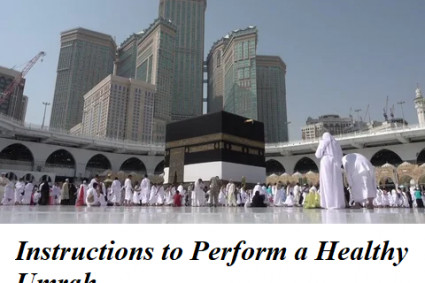Umrah is a shorter kind of pilgrimage to Makkah that is not mandatory but is a desired Sunnah (traditions and practices of the Prophet). It is a sacred act of worship to Allah and a tremendous benefit for every Muslim. Every year, millions of pilgrims make this pilgrimage to pray, seek compassion, and recover their faith. Umrah pilgrimages are classified into two types. Those that must be followed by Hajj and those that are self-contained. In this article, we will look at how they differ from one another. That is offered by our travel agency with the best and cheap hajj Packages from the UK.
• What is the difference between the two forms of Umrah?
There’re two kinds of umrah:
- Umrah-ul-Mufradah
- Umrah-al-Tammatu
1. Umrah ul-Mufradah, the independent pilgrimage
Umrah-ul-Mufradah is distinct from Hajj. It is a voluntary pilgrimage that may be conducted at any time of year except during the Hajj. This Umrah can be performed during Ramadan or at any other period of the year. However, the month of Rajab is seen to be ideal for doing Umrah Mufradah.
Rules and Guidelines for Umrah-ul-Mufradah
- Pilgrims are not required to conduct Umrah Mufradah as part of a group. It is done on an individual basis prior to the start of the Hajj ceremonies.
- Someone who can only undertake Umrah Mufradah has a responsibility to do so. If he or she lacks the physical capabilities and financial means to undertake Hajj (which is required at least once in a lifetime). Then doing Umrah al Mufradah is a necessary precaution. This also illustrates how, depending on the circumstances, an optional pilgrimage might become mandatory or voluntary.
- It is permissible to conduct Umrah al Mufradah in the months preceding Umrah al-Tammatu.
- Umrah al-Mufradah cannot be done twice in the same Islamic lunar month. However, there is no set time limit for doing Umrah al-Mufradah twice.
- Umrah al Mufradah can also be performed twice in a lunar month, once for oneself and once for someone else. The latter is known as Umrah Badal.
- In Umrah Mufradah, there are seven obligatory rituals: Ihram, Tawaf, Namaz-e-Tawaf, Sai, Taqsir, Tawaf-un-Nisaa, and Namaz-e-Tawaf-un-Nisaa.
- If a person does Umrah al Mufradah and stays in Makkah until the 8th of Zill Hijjah, he may consider Umrah al Mufradah as Umrah al Tammatu. And undertake the Hajj-e-Tammatu ceremonies. In this circumstance, though, one must make a sacrifice.
2. Umrah-al-Tammatu, the required pilgrimage
In the month of Zill Hajj, this sort of Umrah is conducted in combination with Hajj. It can only be performed during Hajj, but before the Hajj ceremonies begin. Most Muslims find it convenient since they may conduct both Umrah and Hajj at the same time/month without having to plan separate schedules for both pilgrimages.
Rules and Guidelines for Umrah-al-Tammatu
- Umrah-al-Tammatu can only be conducted on Hajj days. This occurs throughout the months of Shawwaal, Dhul Qadah, and Dhul Hijjah.
- Umrah-al-Tammatu must be completed with other Hajj travelers.
- A traveler is not authorized to leave Holy Makkah before completing the Hajj and Umrah Tammatu.
- Those who already reside in Makkah are exempt from doing Umrah Tammatu.
- Umrah Tammatu rituals include Ihram, tawaf, tawaf prayer, Sai, and Taqsir.
- Tawaf an-Nisaa is not a required rite in Umrah Tammatu. On the basis of prudence, a pilgrim may conduct tawaf with prayer.
- In Umrah Tammatu, Halq (shaving the head) cannot be used in place of Taqsir (hair clipping). Men are only advised to trim since Hajj may need Halq.











